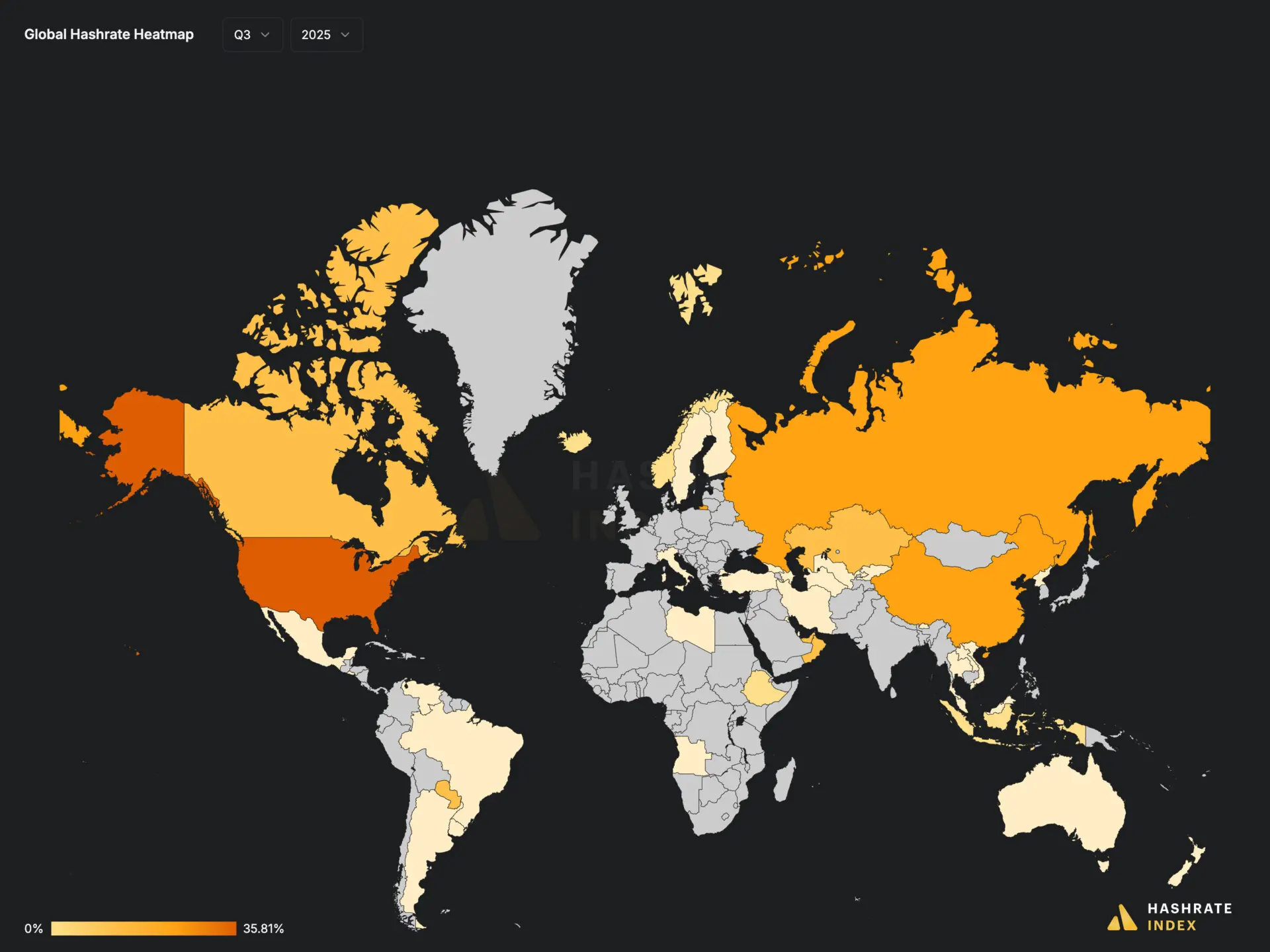Russia and China Lead Bitcoin Hashrate Growth

The United States leads in pure Bitcoin computing power, reaching 323.4 exahashes per second (EH/s), while Russia and China have seen their hashrate increase by 19.05% and 13.13%, respectively.
The Hashrate Index Bitcoin mining heat map showed that the U.S. accounts for 35.81% of the total global BTC hashrate. In Q2 of this year, the U.S. BTC hashrate was 36.025%, representing a relative change of 0.6%. The absolute change was about 0.2%.
Currently, the total BTC computing power in the US is 323.4 EH/s, up 11.52% from 290 EH/s in Q2 2025.
On the Bitcoin mining heat map, the US is highlighted in the darkest orange as the country has the largest share of the global market.
Russia and China Lead Bitcoin Hashrate Growth
In Q3, Russia's hashrate reached 150 EH/s, up from 126 EH/s in Q2, representing a 19.05% increase in raw computing power. The country's relative Bitcoin hashrate change was 6.12%. The hashrate market share in Q2 was 15.652%, while the current figure is 16.61%, representing an absolute change of 0.96 percentage points.
China's hashrate increased by 13.13%, rising from 110.5 EH/s to 125 EH/s. The country's share of the hashrate market increased slightly from 13.727% to 13.84%, representing an absolute change of 0.113 percentage points and a relative change of 0.823%.
In the Middle East, the main players in terms of hashrate power are the United Arab Emirates (UAE) and Oman.
In the UAE, computing power increased by 32 EH/s compared to 30 EH/s at the end of Q2. The Emirates' share of the global hashrate market was 3.544%, compared to 3.727% in Q2 2025.
Oman is the second-largest country in the Middle East, increasing its hashrate by 27 EH/s compared to 25 EH/s in the previous quarter. The country's hashrate market share was 2.99%, down from 3.106% in Q2.
Other countries that stand out in terms of mining hashrate include Canada and Paraguay. Canada holds a 2.935% market share with 26.5 EH/s of computing power, while Paraguay holds 3.876% of the global market with 2.5 EH/s of computing power.
 Bitcoin mining heat map. Source: Hashrate Index.
Bitcoin mining heat map. Source: Hashrate Index.
Bitcoin Mining Difficulty Increased By 7.96%
Bitcoin mining difficulty has increased by about 7.96% over the past week, reaching 126.27 trillion. The difficulty change occurred at block number 905,184. This is the ninth difficulty increase this year. In comparison, the BTC network has seen five difficulty decreases in the same period.
Network difficulty has decreased by 0.11% over the last 30 days, but has increased by 3.92% over the last 90 days.
The next Bitcoin mining difficulty adjustment is expected to take place on Saturday, July 26. Data indicates that the upcoming adjustment will reduce the mining difficulty from 126.27 trillion to 123.19 trillion.
The Bitcoin network difficulty is adjusted every 2016 blocks, or roughly every two weeks. This mechanism maintains an average block confirmation time of about 10 minutes.
The recent rise to 126.27 trillion was due to an increase in the overall mining power on the network.
Bitcoin has fallen 0.9% from its all-time high of $122,838. At the time of publication, the coin was priced at $121,760, with a daily trading volume of $59.2 billion. BTC has a market capitalization of $2.4 trillion and a market share of 62.4%.
Source: cryptonews.net



